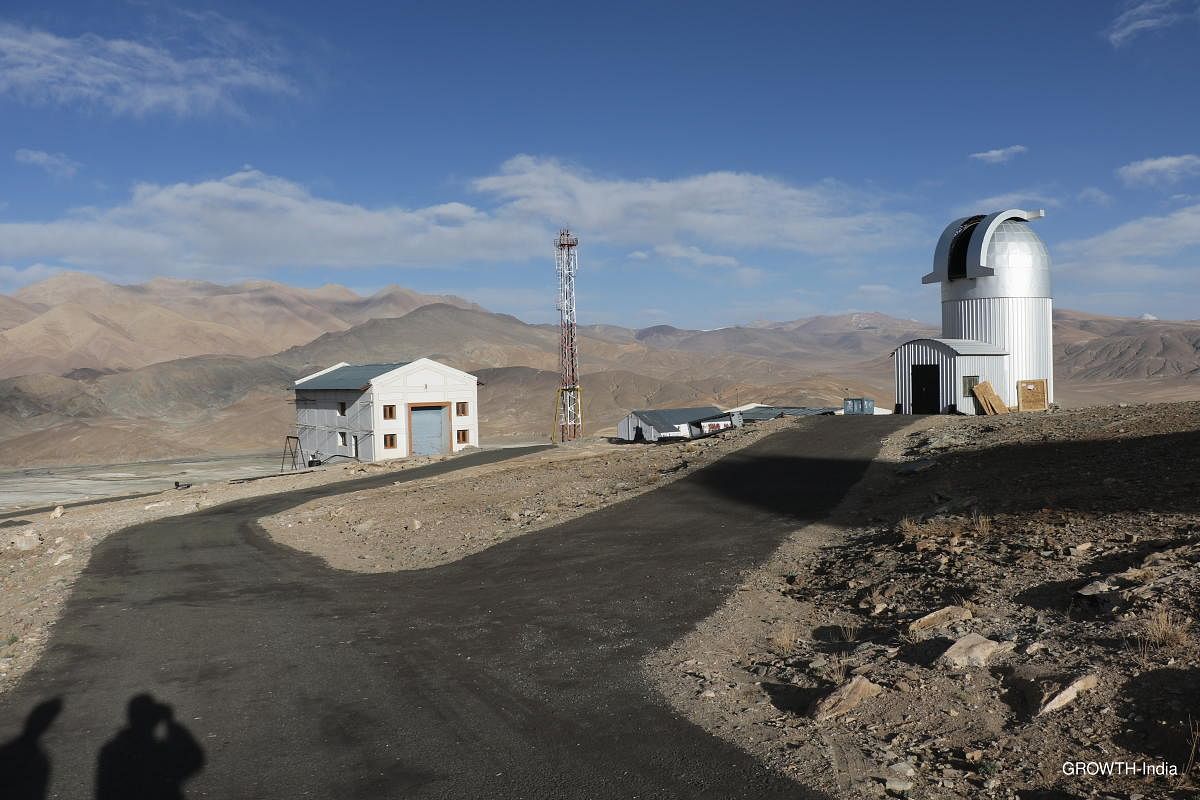
Indian Institute of Astrophysics, Bengaluru, has operationalised another optical telescope at Hanle in Ladakh to observe distant stars that can provide new clues on how heavy elements are cooked inside a star and what is the final fate of such stars.
The new 0.7 mt telescope experienced its first light on June 12, G C Anupama, in-charge of Indian Astronomical Observatory at Hanle and a professor at the institute told DH.
The new telescope is located close to the same site where the existing 2 mt Chandra telescope was installed in 2000. A high altitude gamma-ray telescope is also collocated at the same spot, which is almost 10 hours of drive from Leh.
It is a part of a worldwide network of 18 observatories known as Global Relay of Observatories Watching Transients Happen (GROWTH). Its an international science collaboration to study the physics of fast-changing events like supernovae, neutron stars or black hole mergers, and near-earth asteroids.
“It's also a robotic telescope in the sense that telescope automatically will open up the dome, do the calibration, carry out the observation, shut the dome in the morning and do the preliminary data analysis. Scientist’s job is to interpret the data,” said Varun Bhalerao from Indian Institute of Technology, Bombay, who is also a principal investigator in the project.
Imported from the USA with funding support from the Department of Science and Technology, the Rs 3.5 crore telescope is designed to capture cosmic events occurring in timescales much shorter than light years — years, days and even hours.
The GROWTH project focus on three scientific themes in the field of time-domain astronomy. These are cosmic explosions (supernovae), small near-earth asteroids and the electromagnetic identification of gravitational wave sources.
Two important questions whose answers astrophysicists would try to seek from the GROWTH observation are: where and how heavy elements are synthesised in the universe and what are the final fate of the stars. “We will also look at the sources of gravity waves in the electromagnetic spectrum,” she said.
Yet another telescope named Major Atmospheric Cherenkov Experiment (MACE) would be coming up at the same site at Hanle. Being set up by Bhabha Atomic Research Centre, Mumbai, the telescope is expected to be operational by 2019.
Once ready, MACE would be the world's second largest gamma-ray telescope (21 m diameter), capable of withstanding wind velocities up to 130 km per hour.
